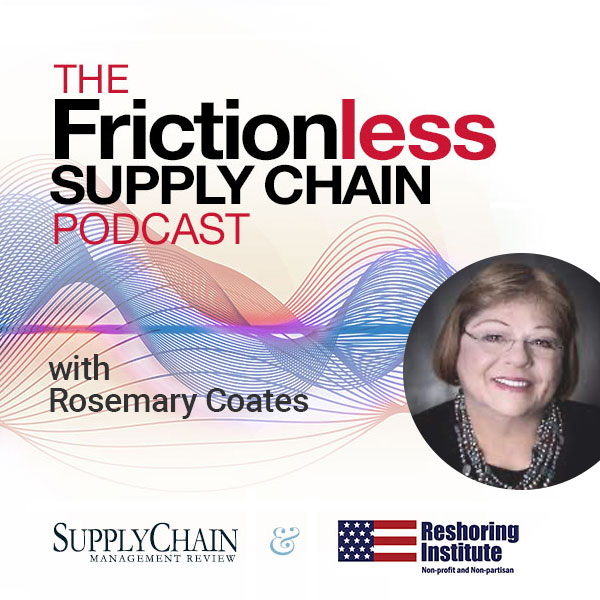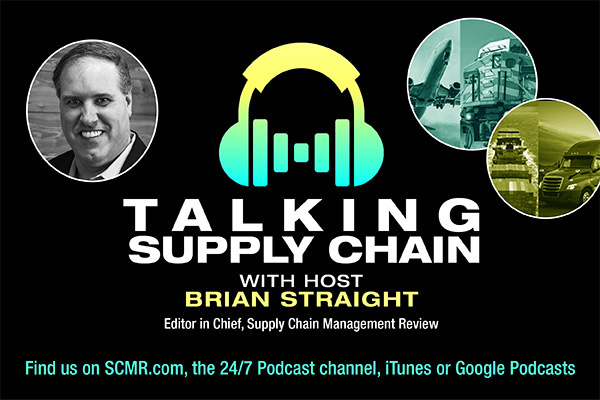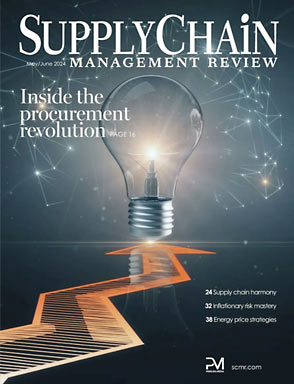Sorry, but your login has failed. Please recheck your login information and resubmit. If your subscription has expired, renew here.
May-June 2020
Most of the time, when I sit down to write this column I look at what I wrote for the previous year’s issue for perspective or inspiration. The truth is, nothing I’ve written before, or experienced in my 64 years, has prepared me for COVID-19. I’m sure that most, if not all, of you can say the same. Yes, it’s a global crisis, but closer to home, it’s a supply chain crisis. Quite simply, even the best supply chains, at least those that are still operating, are broken. Browse this issue archive.Need Help? Contact customer service 847-559-7581 More options
Early in the Financial Crisis of 2007-2008, we laid out six supply chain strategies to address unprecedented challenges. Although circumstances are very different now, companies once again confront imminent recession, operational dislocation and great uncertainty. A March study released by the Institute for Supply Management found that 81% of U.S. companies expect their procurement operations to be affected by COVID-19. And, 29% report that it will have a “moderate” to “severe” impact on operations for the rest of the year, while 40% say the impact is still “unknown.” In our view, these results suggest many companies are underestimating the impact of COVID-19.
Pressure to reduce costs is escalating rapidly, but procurement and supply chain management groups also need to ensure supply chain continuity, safeguard the viability of key suppliers and retain the ability to pivot, and scale up production and business activity as we come through the current crisis and enter recovery. Below we reprise and update strategies we shared in 2007-2008 as a playbook for navigating turbulent times.
1. Revisit supplier agreements—and take a collaborative approach to negotiations.
Many companies are finding themselves saddled with supply contracts that have been rendered obsolete by abrupt changes in market conditions. We caution against what some companies are doing, namely, refusing to take delivery of contracted volumes and/or demanding price reductions. Rather, we suggest that companies systematically analyze their major supply contracts to determine if there is a legitimate basis for renegotiation, and if so, engage negotiations in a collaborative fashion. For example, many current supplier contracts are based on peak commodity, material and labor costs. Particularly when companies agreed to high pricing based on high supplier input costs, and markets where demand significantly exceeded supply, customers have a reasonable basis to open discussions with suppliers.

This complete article is available to subscribers only.
Log in now for full access or start your PLUS+ subscription for instant access.
SC
MR
Sorry, but your login has failed. Please recheck your login information and resubmit. If your subscription has expired, renew here.
May-June 2020
Most of the time, when I sit down to write this column I look at what I wrote for the previous year’s issue for perspective or inspiration. The truth is, nothing I’ve written before, or experienced in my 64 years,… Browse this issue archive. Access your online digital edition. Download a PDF file of the May-June 2020 issue.Early in the Financial Crisis of 2007-2008, we laid out six supply chain strategies to address unprecedented challenges. Although circumstances are very different now, companies once again confront imminent recession, operational dislocation and great uncertainty. A March study released by the Institute for Supply Management found that 81% of U.S. companies expect their procurement operations to be affected by COVID-19. And, 29% report that it will have a “moderate” to “severe” impact on operations for the rest of the year, while 40% say the impact is still “unknown.” In our view, these results suggest many companies are underestimating the impact of COVID-19.
Pressure to reduce costs is escalating rapidly, but procurement and supply chain management groups also need to ensure supply chain continuity, safeguard the viability of key suppliers and retain the ability to pivot, and scale up production and business activity as we come through the current crisis and enter recovery. Below we reprise and update strategies we shared in 2007-2008 as a playbook for navigating turbulent times.
1. Revisit supplier agreements—and take a collaborative approach to negotiations.
Many companies are finding themselves saddled with supply contracts that have been rendered obsolete by abrupt changes in market conditions. We caution against what some companies are doing, namely, refusing to take delivery of contracted volumes and/or demanding price reductions. Rather, we suggest that companies systematically analyze their major supply contracts to determine if there is a legitimate basis for renegotiation, and if so, engage negotiations in a collaborative fashion. For example, many current supplier contracts are based on peak commodity, material and labor costs. Particularly when companies agreed to high pricing based on high supplier input costs, and markets where demand significantly exceeded supply, customers have a reasonable basis to open discussions with suppliers.
SC
MR

Latest Supply Chain News
- Despite American political environment, global geopolitical risks may be easing
- Joseph Esteves named CEO of SGS Maine Pointe
- Employees, employers hold divergent views on upskilling the workforce
- April manufacturing output slides after growing in March
- Q1 sees a solid finish with positive U.S.-bound import growth, notes S&P Global Market Intelligence
- More News
Latest Podcast

 Explore
Explore
Procurement & Sourcing News
- Despite American political environment, global geopolitical risks may be easing
- April manufacturing output slides after growing in March
- World Trade Centers offers a helping hand to create resilient, interconnected supply chains
- Bridging the ESG gap in supply chain management: From ambition to action
- Israel, Ukraine aid package to increase pressure on aerospace and defense supply chains
- How CPG brands can deliver on supplier diversity promises
- More Procurement & Sourcing
Latest Procurement & Sourcing Resources

Subscribe

Supply Chain Management Review delivers the best industry content.

Editors’ Picks






